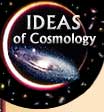
|
|
 |
Evidence
that Supported Doubts that Spiral Nebulae are Separate Galaxies |

|
|
|
|
The most compelling objection to spiral nebulae as separate island universes was measurements of rotations of spiral nebulae by Adriaan van Maanen at the Mount Wilson Observatory. From comparisons of photographic plates of spiral nebulae taken several years apart, van Maanen thought that he could identify specific stars within particular nebulae, and trace their movements due to rotation of the nebulae. Only later was it recognized that van Maanen's purported measurements were mistaken. (Spiral nebulae do rotate, but not so rapidly that the motion is large enough to detect from photographs taken a few years apart.) If the spiral nebulae were large and distant island universes, the motions van Maanen reported he saw would translate into speeds greater than the speed of light, which is impossible. So it seemed more likely that spiral nebulae were small objects within our galaxy.
Van Maanen's relationship with Hubble, his colleague at the Mount Wilson Observatory, was strained. Initially, Hubble ignored van Maanen's work, except for a private talk in which he ruthlessly demolished van Maanen's claim of corroboration by other observers. Finally Hubble went public. The editor of the Mount Wilson Observatory publications wanted to resolve all differences between Hubble and van Maanen in advance of publication. If agreement could not be attained, he felt that the institution had the right to specify how results should be presented to the public. But he realized that in certain cases it might be wiser to waive the Observatory's technical right and say to a dissatisfied individual (particularly one of Hubble's international stature!) "Print what you like, but print it elsewhere." Faced with the unsatisfactory alternatives of leaving van Maanen's work unchallenged or challenging it head-on in what might be thought an ungentlemanly manner, Hubble resolved the dilemma ingeniously. First, he invited an astronomer whose measures van Maanen had earlier claimed as corroboration to participate in Hubble's new measurements. This astronomer did not explicitly contradict van Maanen's account of his work, but readers of the new paper could easily form that impression. Hubble published a brief note pointing to van Maanen's results as the outstanding discrepancy in the theory that nebulae are extragalactic systems. Hubble's remeasurement of four spiral nebulae established the existence of systematic errors in van Maanen's purported rotations. On the source of the errors, Hubble was silent. Privately, in studies he wrote up but never published, Hubble had tried mightily, but ultimately failed, to attribute the erroneous measurements to random errors. Random errors would have produced random results, but van Maanen had reported all seven of his spiral nebulae as rotating in a "winding up" direction. With honest intentions but mistakenly, and despite impressive precautions, van Maanen had seen what he expected to see, even though it didn't exist. Van Maanen did not retract his earlier claim. But now he at least conceded, in a note in the Astrophysical Journal immediately following Hubble's, that "it is desirable to view the motions [van Maanen's earlier ones] with reserve." Obviously this arrangement had been negotiated with Hubble and the editor of the journal. |
|
|||||
Copyright ©. Brought to you by the Center for History of Physics, a Division of the American Institute of Physics |